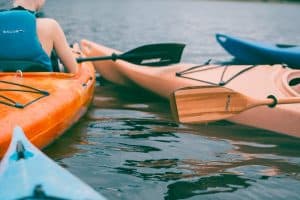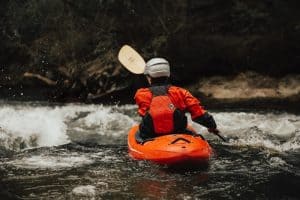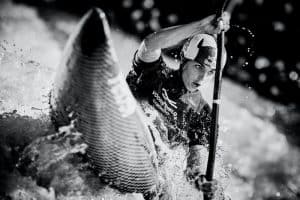Is kayak good exercise? Is kayaking a form of exercise, too? Well, here’s good news for you. Yes, kayaking is a great exercise. To be more specific, it is a great workout for your upper body.

With proper technique, kayaking helps you build muscles in the back, shoulders, lower and upper arms, and abdomen. Continue reading below to learn more about kayaking and what makes it an exercise worthy to try.
Is Kayaking Good Exercise?
Yes, kayaking, when done properly, can be a very good form of exercise. But don’t expect that you will get any exercise at all if you just let your kayak float down the water sitting on your bum and not doing any paddle strokes in the first place.
If you want kayaking to be your exercise or workout, the first step is to treat it as one.
Doing sprints is the most ideal way to get a workout when kayaking on flat water. Paddle for a minute at full race pace, take a rest for 20 seconds, and paddle again at a race pace for one more minute. Spend one minute for some rest and repeat the exercise until you feel fatigued in your core.
If you plan to ride a creek boat to go kayaking downriver, your best chance to get a good workout is by catching as many eddies, surfing as many waves, and doing as many ferries as you can. Make sure you challenge yourself whenever you hit the water. Doing so will not just improve your skill but also your strength and endurance.
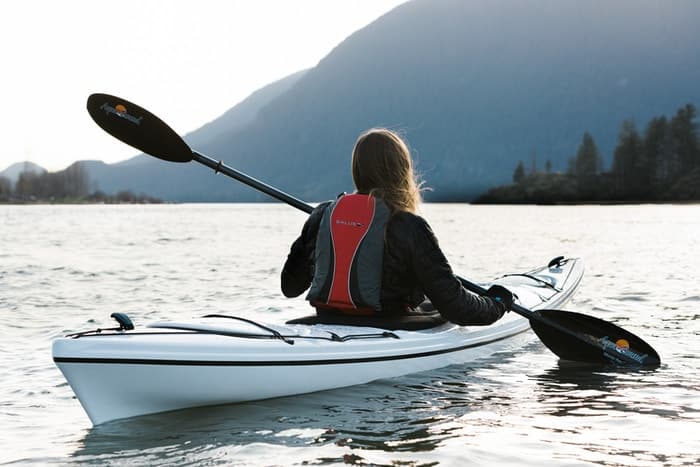
Fun Outdoor Quiz
You will likely get some workout whatever you do if you will kayak on a standing wave in a playboat. Your core can get some incredible workouts if you do some freestyle kayaking since your core will remain engaged when surfing waves for you to remain stable.
Kayaking as much as possible and as you can is always the best way to build your strength during this activity. You can enjoy faster progress in terms of skill and strength if you also spend more time in your boat surfing waves, doing sprints, and taking strokes.
What are the Benefits of Kayaking for Your Body and Health?
A unique form of recreational activity, paddling a kayak helps you build muscles, gives you an effective cardio workout similar to walking or cycling, and even lifts your mood in ways you can never imagine. This is a form of low-impact exercise that builds your strength and hones your aerobic fitness and flexibility.
Paddling offers several health benefits, and these include the following:
- It enhances cardiovascular fitness.
- Being a low-impact activity, paddling reduces stress on the joints and keeps them safe from wear and tear.
- It enhances the strength of the muscles, particularly the arm muscles, shoulders, chest, and back as you use all of them when paddling.
- It improves the strength of the torso and legs as you keep your legs stable and rotate your torso.
Beyond these physical benefits, another notable benefit of kayaking is its positive effect on your mind. Paddling can be exhilarating, tranquil, or meditative, depending on where you decide to go paddling. This boosts your endorphins which can lead to a better mood and lowers your stress levels as you bask in the fresh air and breeze of the countryside.
Is Kayak Good Exercise for Back Pain?
Yes, kayaking can also be a good exercise to relieve back pain depending on the severity and type you are dealing with. Kayaking works your lower back and core muscles through the motion of torso twisting. This can make the smaller muscles around the spine much stronger which provides more stability and strength in your core and back.
Before you go kayaking in the hopes of experiencing some back pain relief, don’t forget to consult your doctor first to make sure that you don’t end up causing more damage. Once your doctor gives you the go signal, try testing out several kayak designs first as much as possible to find one that feels most comfortable for your back while you sit in it. The outfitting in kayaks can also be adjusted to offer better back support through the addition of backrests, foam, and straps.
The most recommended way to use kayaking for relief from back pain is to start small and build up from there little by little. Take some slow strokes in flatwater first then wait for up to two days to ensure that you don’t exacerbate your back pain. You can then slowly push a bit more next time you kayak if your back feels fine. In time, you will hopefully hone the muscles surrounding your spine to offer better pain relief and more stability.
Is Kayak Good Exercise for Weight Loss and Burning Belly Fat?
Yes, it is. Being an inherently cardiovascular exercise, kayaking lets you burn anywhere around 400 to 500 calories per hour. It applies even if you just exert minimum effort or paddle casually.
Remember that your core muscles are a vital aspect of a good paddling technique. Through a proper trunk rotation, both your oblique and abdominal muscles generate the highest amount of power behind your paddle strokes.
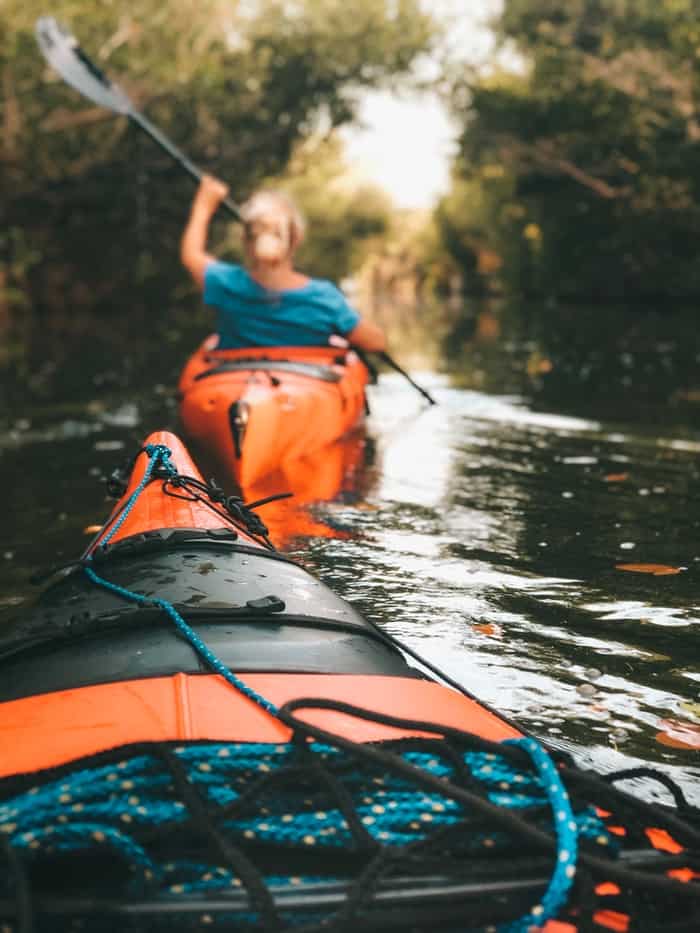
Aside from this, your core muscles also constantly work so you can maintain your balance inside the kayak. You will realize this immediately if you are just getting started with the sport.
It is even common for many new kayakers to feel as if they have performed a couple of hundred crunches after they spent just one to two hours on the water.
Is Kayak Good Exercise to Boost Endurance?
Yes, kayaking is a great way to boost your endurance because you need to paddle for hours. If you have always wanted to have more stamina and energy throughout the day, and you want to walk several blocks for your morning exercise, kayaking is an activity you might want to try.
After doing it for some time, you will find yourself kayaking longer without feeling tired. You will also enjoy more energy all day long, making your daily tasks so much easier.


